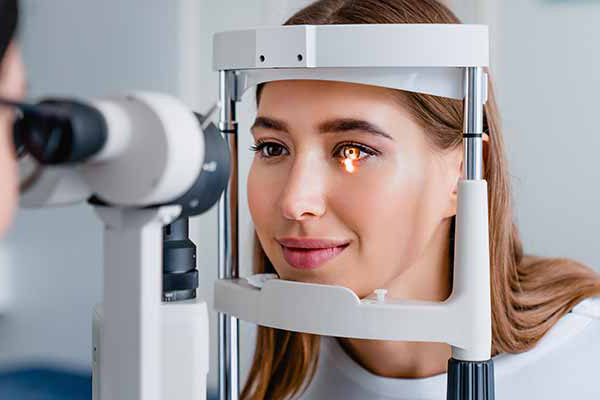Leading Cardiologist in Andalusia: Discover Specialist Clinics Near You
The Advantages And Disadvantages of Various Refractive Surgeries for Improved Eyecare

LASIK Surgical Treatment
LASIK surgical treatment is a commonly executed refractive procedure that intends to deal with vision concerns such as farsightedness, nearsightedness, and astigmatism. This surgical strategy has actually gained appeal because of its efficiency in offering individuals with more clear vision and minimizing their dependency on glasses or call lenses. During the procedure, a slim flap is produced on the cornea, and a laser is made use of to improve the underlying cells, dealing with the refractive mistake. The flap is then repositioned, enabling for fast recovery and minimal discomfort for the individual.
One of the primary benefits of LASIK surgery is the rapid renovation in vision experienced by several clients. It is necessary for people taking into consideration LASIK surgical treatment to go through an extensive examination by an eye care expert to establish if they are appropriate candidates for the procedure.
PRK Procedure
The PRK treatment, likewise known as Photorefractive Keratectomy, is a type of refractive surgical procedure that intends to deal with vision concerns similar to LASIK surgery. Unlike LASIK, which includes producing a flap in the cornea, PRK works on the surface area layer of the cornea.
One of the advantages of PRK over LASIK is that it gets rid of the threat of flap-related difficulties considering that no flap is created throughout the surgical procedure. Despite the longer recuperation period, PRK can be a suitable alternative for individuals seeking vision correction surgical procedure.
SMILE Surgical Procedure
A sophisticated refractive surgery technique getting popularity in the field of ophthalmology is SMILE Surgical treatment. Little Cut Lenticule Removal (SMILE) is a minimally intrusive treatment that remedies vision by reshaping the cornea using a femtosecond laser. Unlike conventional LASIK surgical procedure, SMILE Surgery includes creating a small incision in the cornea to extract a lenticule, which leads to less disruption to the corneal structure and possibly quicker recuperation times.
Among the main advantages of SMILE Surgical procedure is its capability to treat myopia (nearsightedness) and astigmatism with high accuracy, resulting in excellent aesthetic results for clients. The minimally intrusive nature of the treatment also reduces the threat of difficulties such as dry eye disorder, making it a desirable alternative for individuals looking for refractive surgery.

LASEK Technique
Having discovered the benefits and factors to consider of SMILE Surgery, one more significant refractive surgery method worth examining is the LASEK Technique. LASEK, which stands for Laser-Assisted Subepithelial Keratectomy, is a form of laser eye surgery that intends to fix refractive mistakes such as myopia (nearsightedness), hyperopia (farsightedness), and astigmatism.
Unlike LASIK, LASEK does not involve developing a corneal flap. Instead, during a LASEK procedure, the specialist makes use of a diluted alcohol service to loosen up the slim external layer of the cornea, known as the epithelium.
One of the primary advantages of LASEK is that it can be suitable for people with thin corneas who may not be great candidates for LASIK. In addition, LASEK typically causes minimal post-operative discomfort and a quicker recovery time contrasted to PRK. Nevertheless, the visual recuperation process with LASEK might be a little longer than with LASIK.
Implantable Get In Touch With Lenses
Implantable Contact Lenses offer a lasting vision improvement option for people looking for an alternative to traditional get in touch with lenses or glasses. These lenses, likewise known as phakic intraocular lenses, are operatively inserted right into the eye to fix refractive mistakes such as nearsightedness (nearsightedness), hyperopia (farsightedness), and astigmatism. eye center andalusia. Unlike traditional get in touch with lenses that rest on the surface of the eye, implantable get in touch with lenses function within the eye itself, giving clear vision without the demand for day-to-day upkeep or removal
Among the crucial advantages of implantable call lenses is their durability. Once placed, they can stay in the eye indefinitely, using consistent and stable vision important source correction. In addition, these lenses can be an outstanding alternative for people who are not good candidates for laser eye surgery or that choose a relatively easy to fix vision correction procedure.
However, implantable get in touch with lenses do lug some threats, including the possibility for cataracts or raised eye pressure. It is vital for individuals considering this choice to seek advice from an eye treatment specialist to establish if implantable contact lenses are the best choice for their details needs and eye health.
Conclusion
In verdict, each type of refractive surgical treatment has its why not look here very own advantages and disadvantages. LASIK surgical procedure is popular for its fast healing time, while PRK treatment may be ideal for patients with slim corneas.

On The Whole, SMILE Surgical treatment offers an encouraging choice for people looking to boost their vision through refractive surgical treatment.